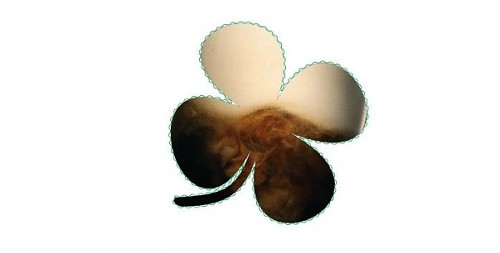Some people I know are happy to sip a Guinness anywhere, anytime. Others reserve their creamy pints of Guinness solely for St. Patrick’s Day. I fall into the former category. One thing is certain: The folks at Diageo—the worldwide alcoholic-beverage company that counts Guinness stout, Harp lager, Kilkenny Irish Cream Ale, Smithwick’s Ale and Bailey’s Irish Cream among its products of Irish origin—sure look forward to St. Patrick’s Day sales. To wit, there are typically about 600,000 pints of Guinness sold on any given day. On St. Patrick’s Day, that number jumps to around 3.5 million. It might be lucky to be Irish on St. Paddy’s Day, but it’s luckier to be in the booze biz.
With all that Guinness being consumed March 17, it’s fortunate that it tastes stronger than it really is. Guinness Draught—the beer sold in most pubs and taverns—is about 3.4 percent alcohol, and the bottles and cans of Guinness Draught sold in supermarkets are even lower. So, you’ll probably get full on Guinness before you’ll get tipsy. With its distinctive creamy head, lovely malt and caramel flavors, and a dry, roasted, slightly bitter finish, Guinness is the perfect beverage to drink alongside St. Paddy’s Day staples like Irish stew or corned beef & cabbage.
Serving a good pint of Guinness flies in the face of what some beer aficionados might believe. Unlike many beers, which you really want to drink cool, not cold, Guinness should be served quite cold. The brewers at Ireland’s St. James Gate Brewery suggest pouring Guinness at about 43 degrees Fahrenheit. Do that, and you’ll discover the reason that Guinness has been poured in pubs, restaurants, bars and homes since 1759.
Along with straight pints of Guinness, another classic St. Patrick’s Day libation is the black & tan. Making a black & tan is more a matter of technique than ingredients, which are about as simple as they come: darkly colored Irish stout and lighter-hued lager beer. First, fill a pint glass half full with lager beer. Then, using the back of a spoon and pouring very slowly, fill the rest of the pint glass with Irish stout, carefully layering it on top of the lager. Don’t freak out if the stout doesn’t layer properly on the first attempt; just drink it up and try again!
Another fancy-sounding Irish stout drink that is remarkably easy to execute is the black velvet. A black velvet is nothing more than a Champagne glass half-filled with chilled Champagne and half-filled with Irish stout.
And, hey, let’s not forget about Irish whiskey. My favorite, Jameson Irish Whiskey, isn’t fancy. But I love it in a rocks glass with one lonely rock—a single ice cube—floating in that luscious amber malt. A bottle of entry-level Jameson runs about $28, and Jameson’s 12-Year-Old Irish Whiskey costs $50. At the higher end for Irish whiskey, you can also find Midleton Very Rare Irish Whiskey in Utah, but it’ll set you back about $140. For a slightly smoky single-malt Irish whiskey with hints of flowers and peat, I recommend opening a bottle of Michael Collins ($40), named for the legendary Irish revolutionary leader.
Finally, an Irish coffee is always a nice nightcap for St. Patrick’s Day. Here’s how to make one: Pour hot coffee into a mug until it’s about three-quarters full. Add 1 tablespoon of brown sugar and stir until the sugar is dissolved. Blend in 1 1/2 ounces of Irish whiskey and top with whipped cream. Serve piping hot.
Speaking of St. Patrick's Day
-
17 Things to Do in and Around SLC on St. Paddy’s Day
Get your green on!
- Mar 10, 2016
-
Irish Soda Bread
An easy St. Paddy's Day recipe
- Mar 15, 2015
-
In the Loop: 3/7/15. Hill Watching With a Beer
Events you should check out from March 8-21
- Mar 7, 2015
- More »
More by Ted Scheffler
-
Flavor on the Western Front
Nomad Eatery ups the ante for off-airport eats.
- Dec 13, 2017
-
Under the Christmas Tree
Holiday gifts for cooks, foodies and winos
- Dec 6, 2017
-
Spreading the Love
Amour Café creates simple yet scrumptious fare.
- Nov 29, 2017
- More »





